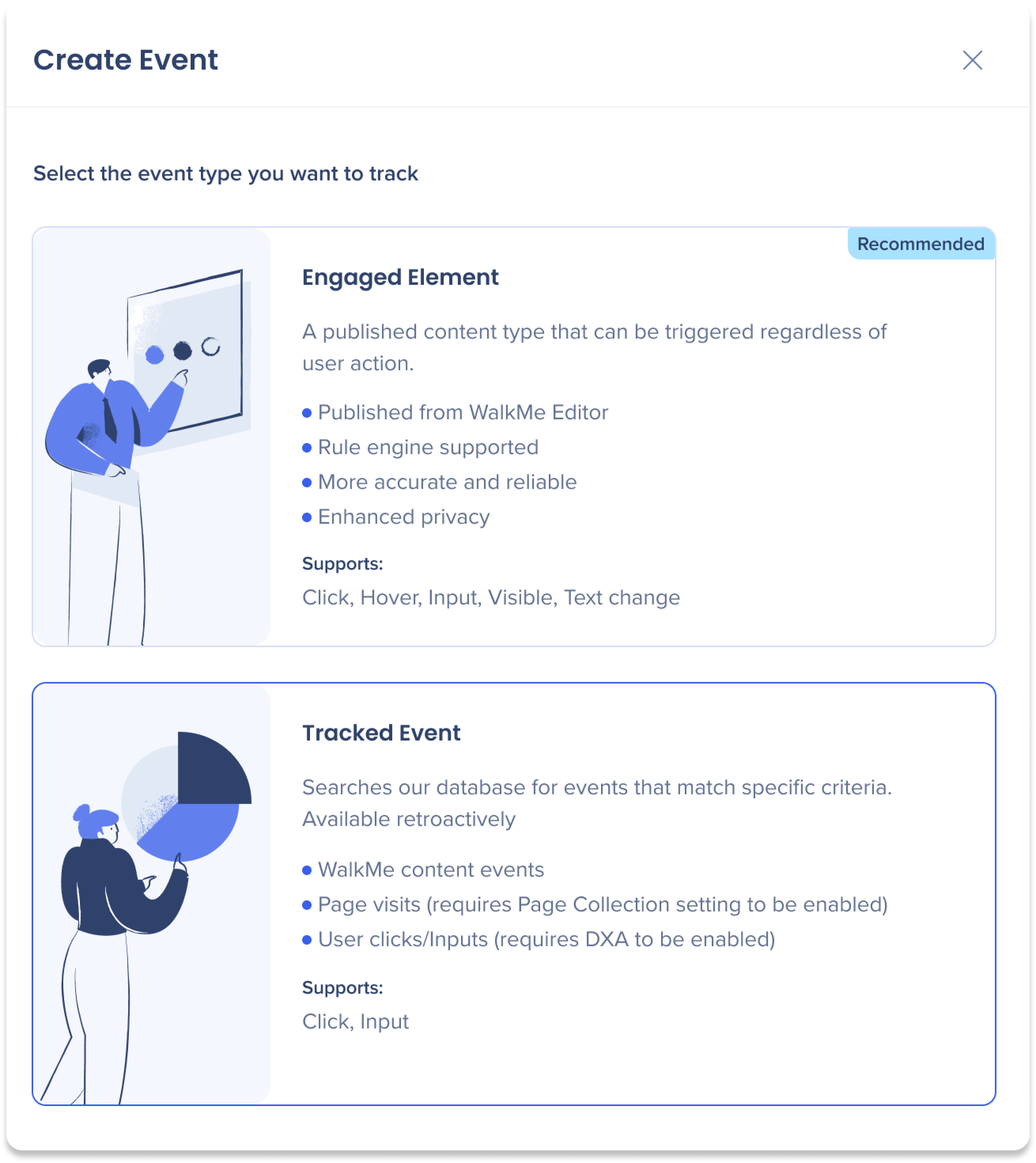Welcome to the
WalkMe Help Center
Please log in to continue

Please log in to continue

The Events page in the WalkMe Console is a centralized workspace for managing, visualizing, and analyzing Tracked Events and Engaged Elements. It lets you review all events in one place, explore trends over time, and create visualizations to understand user behavior across your application using the Management and Visualization tabs.
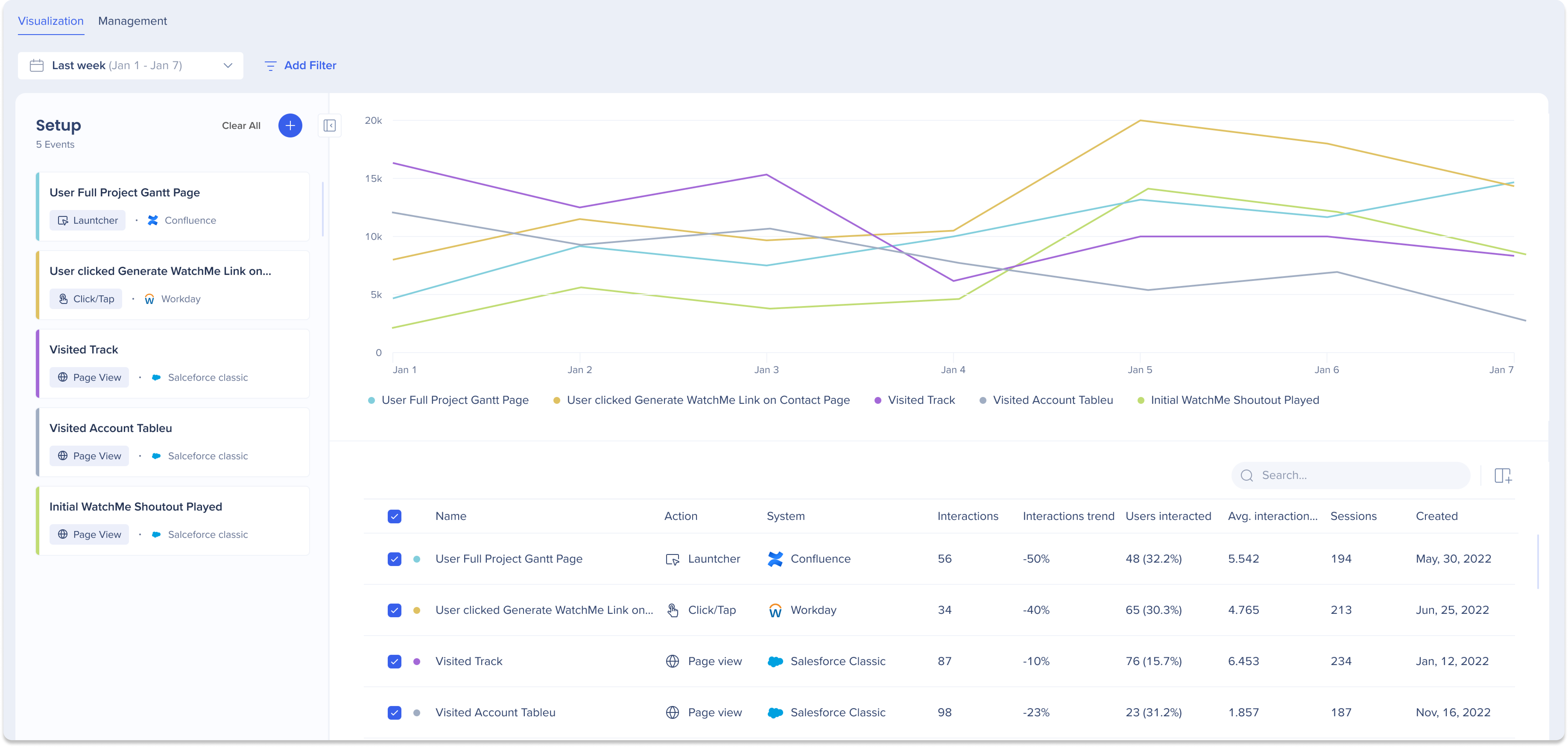
You can access the Events page from the Insights app in the WalkMe Console.
Select the link for your data center:
The Events page supports two event types. Use the descriptions below to choose the right option for your use case.
Editor-based interaction tracking designed for accurate, privacy-conscious insights.
Key characteristics
Event-based tracking for measuring end-to-end processes and business outcomes.
Key characteristics
Use the Management tab to view and manage all Tracked Events and Engaged Elements in your organization.
From this tab, you can:
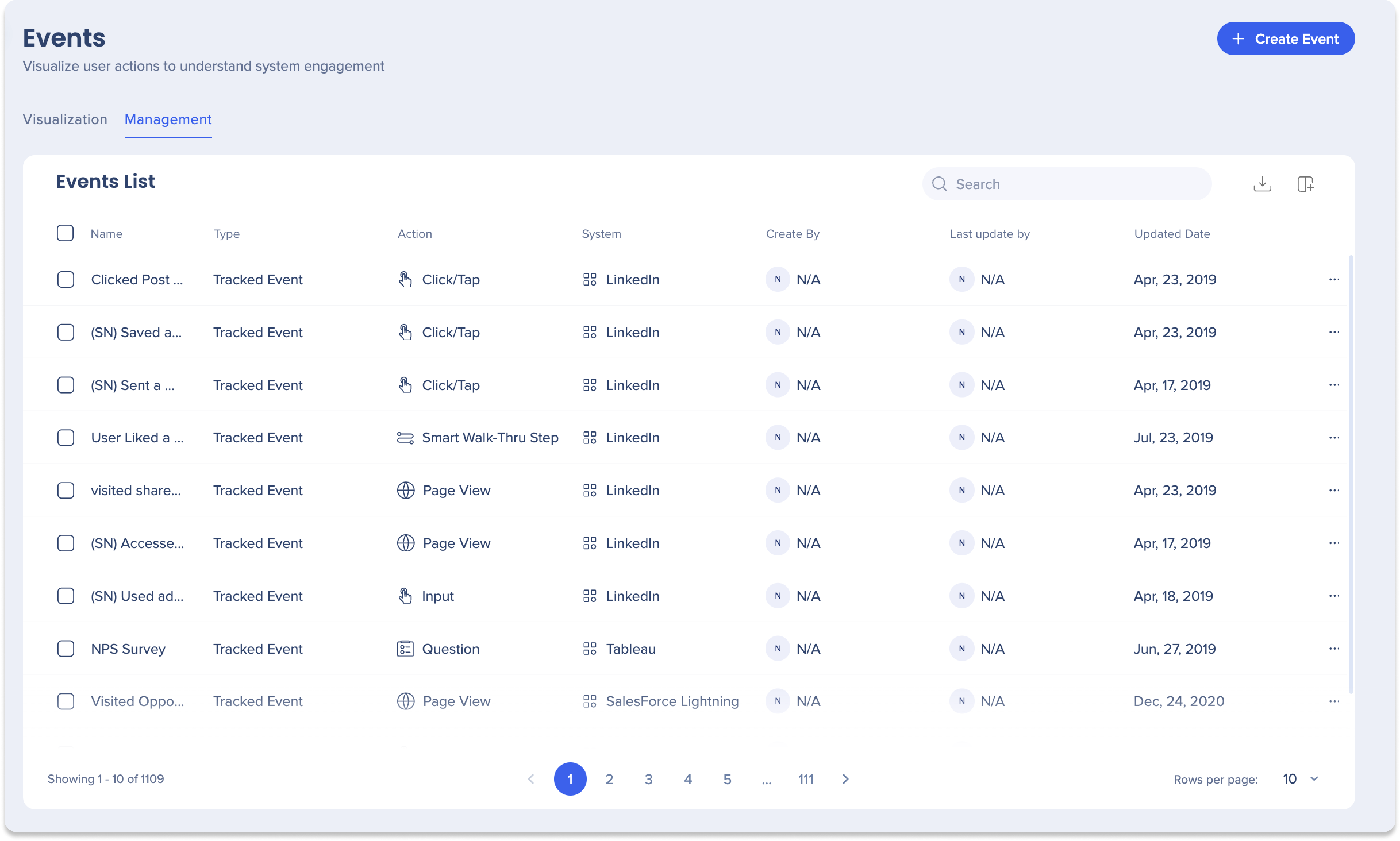
The Events list displays all events with the following details:
Use the Options menu to manage individual events:
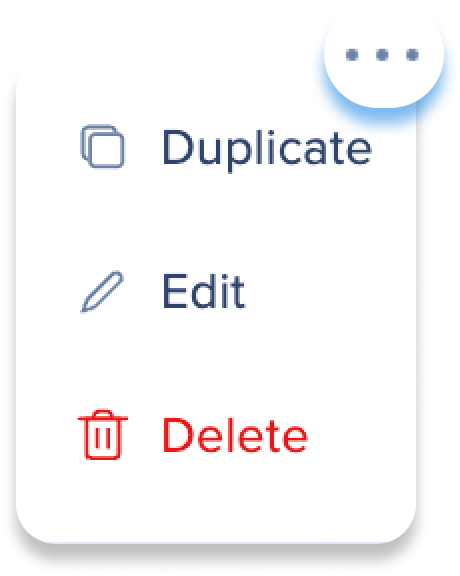
Select one or more events and choose Visualization to add them to the Visualization tab's graph and table.
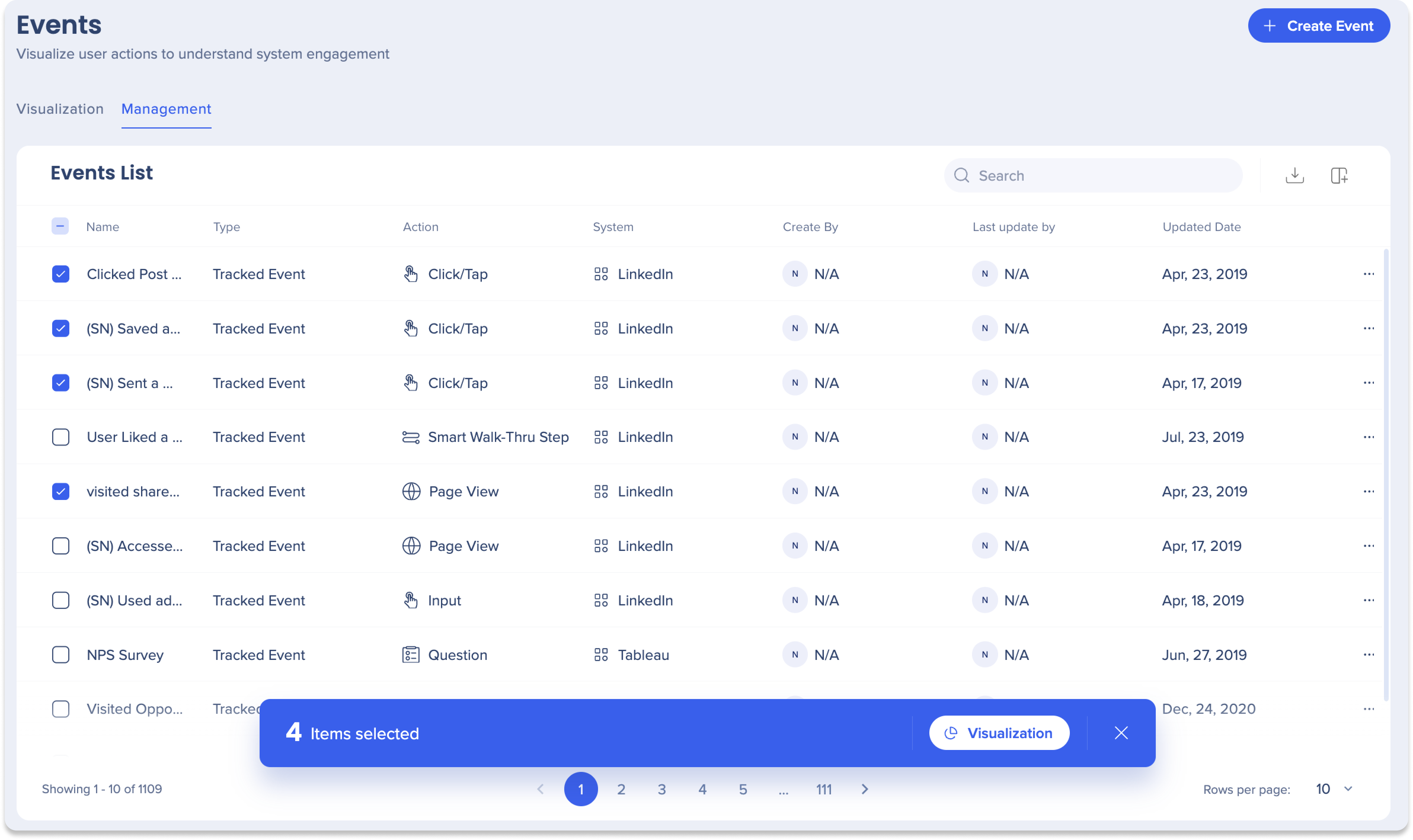
Use the Visualization tab to analyze up to 20 events at a time using a line graph and data table.
From this tab, you can:


Select Create ![]()
Choose either Tracked Events or Engaged Elements
Select the events you want to add to analyze
Select Apply
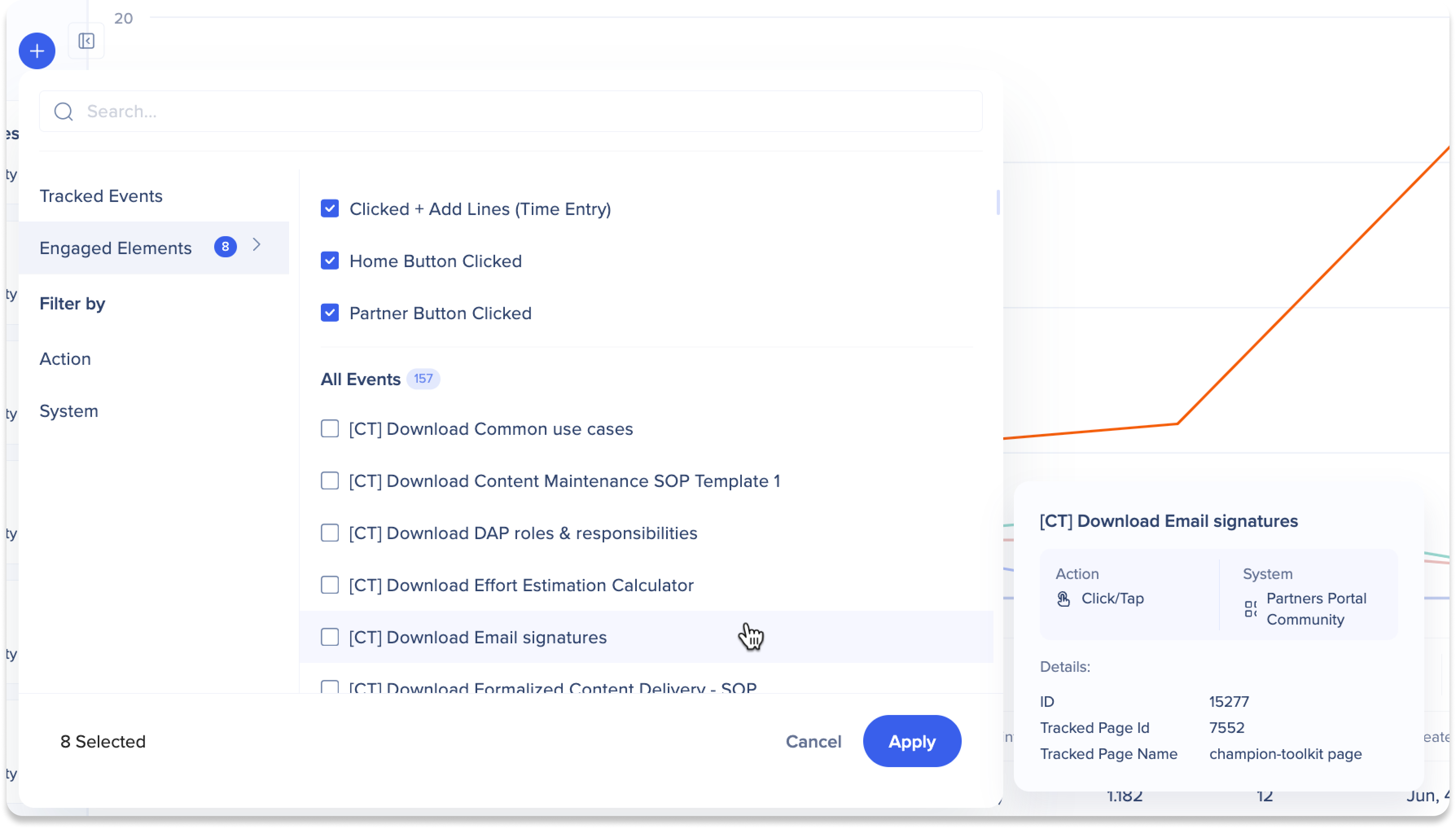
The line graph provides a visual comparison of event trends:
Hover over the graph or an event to view additional details.

The data table provides detailed metrics for each event in the visualization, including:

Date range selector
Use the date range selector to view event data over a specific time period, including predefined ranges or a custom date range.
Today: This filter shows data from the current day
Last week: This filter shows data from the previous week (mon-sun)
Last month: This filter shows data for the previous month
Last three months: This filter shows data for the last three months
Month: This filter shows data from the selected month and year
To use this filter, Last month or Last three months needs to be selected first
Quarter: This filter shows data from the selected quarter and year
To use this filter, Last month or Last three months needs to be selected first
Custom: This filter allows you to select a custom date range to view data
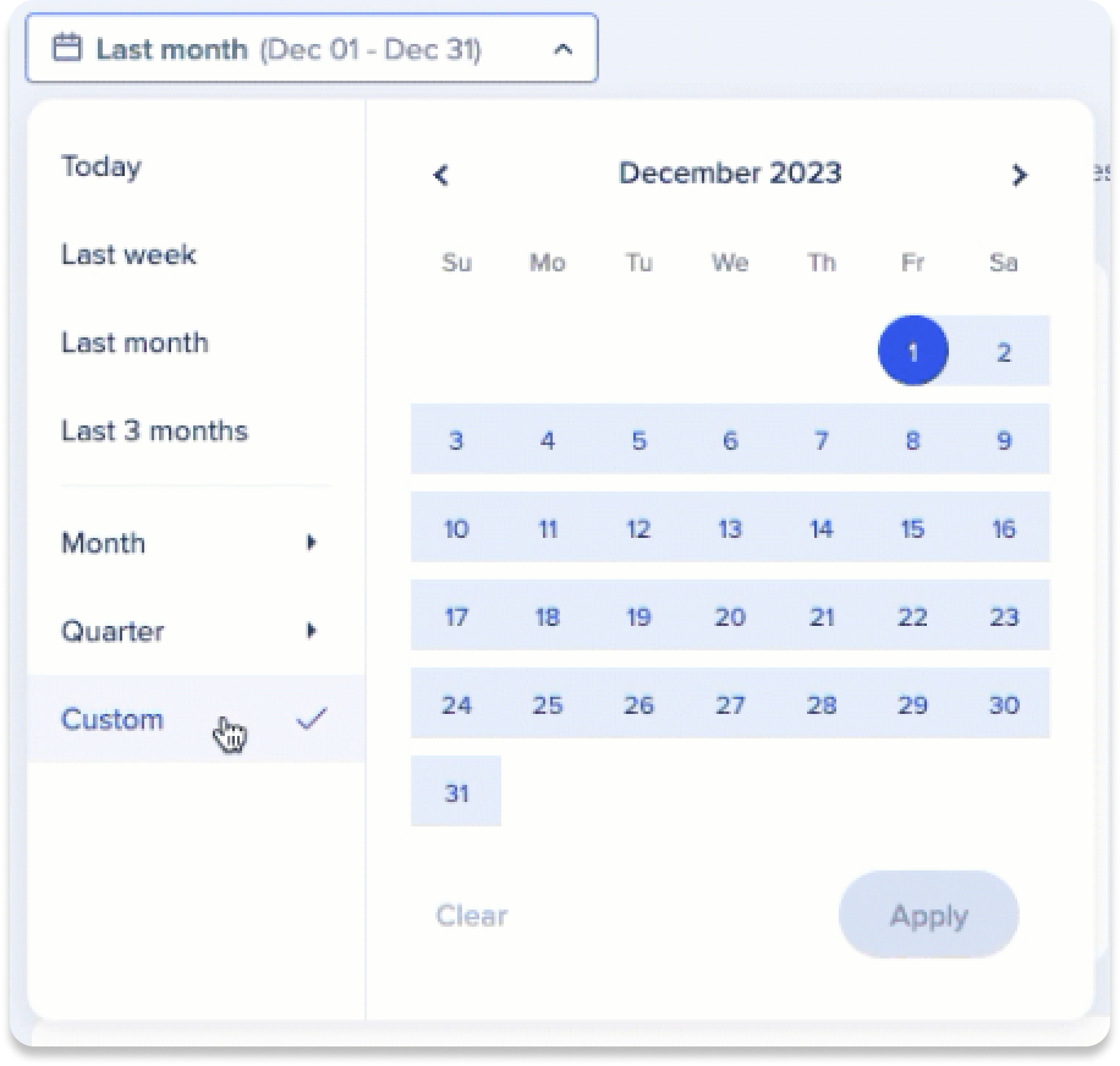
Filters
Use filters to narrow the dataset and focus on specific events, systems, actions, or user segments.
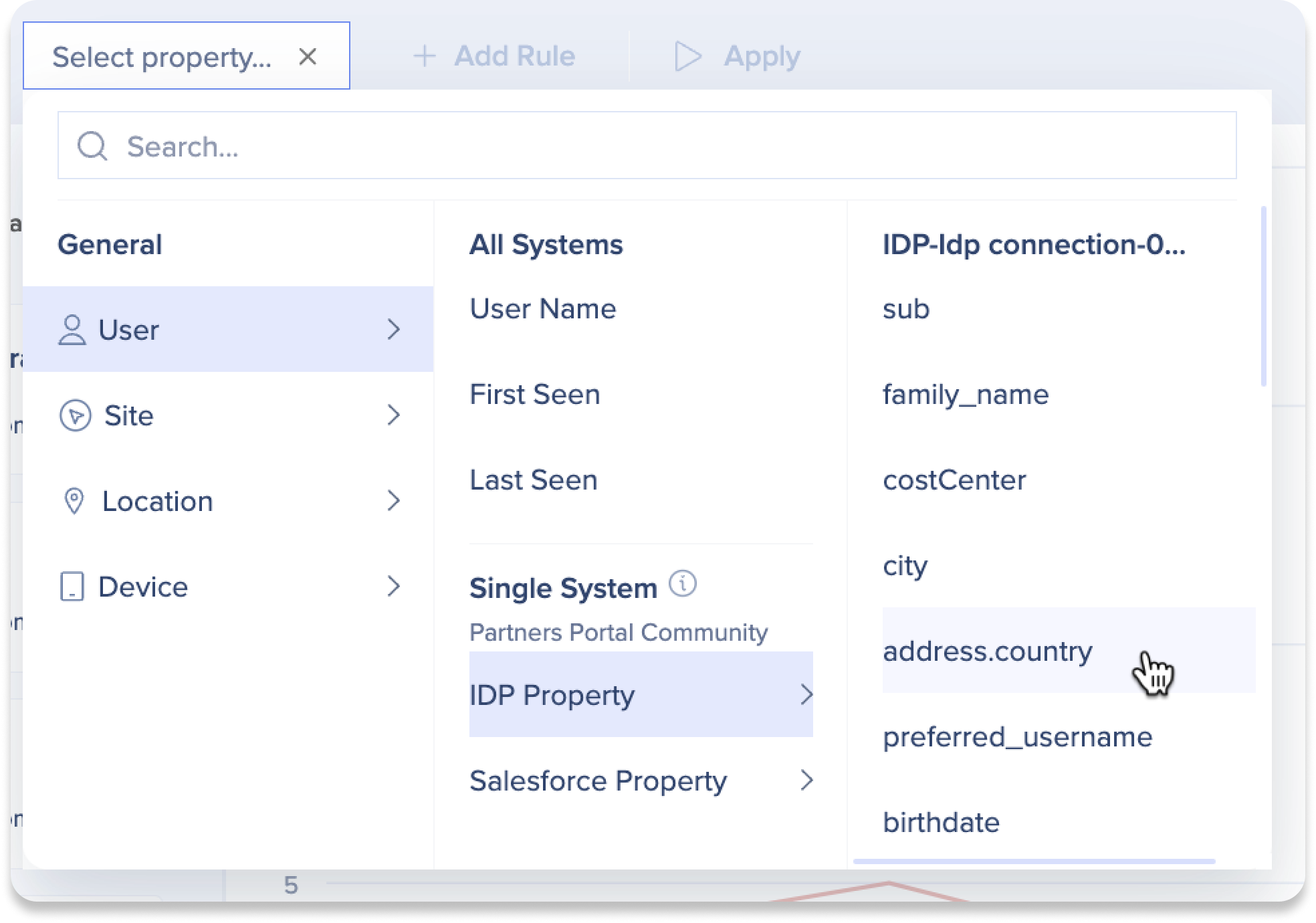
Screenshots are available only for Engaged Elements and help you identify captured elements directly from the Events page.

Select the user count under Users interacted to view a list of users who interacted with the event and explore related attributes.
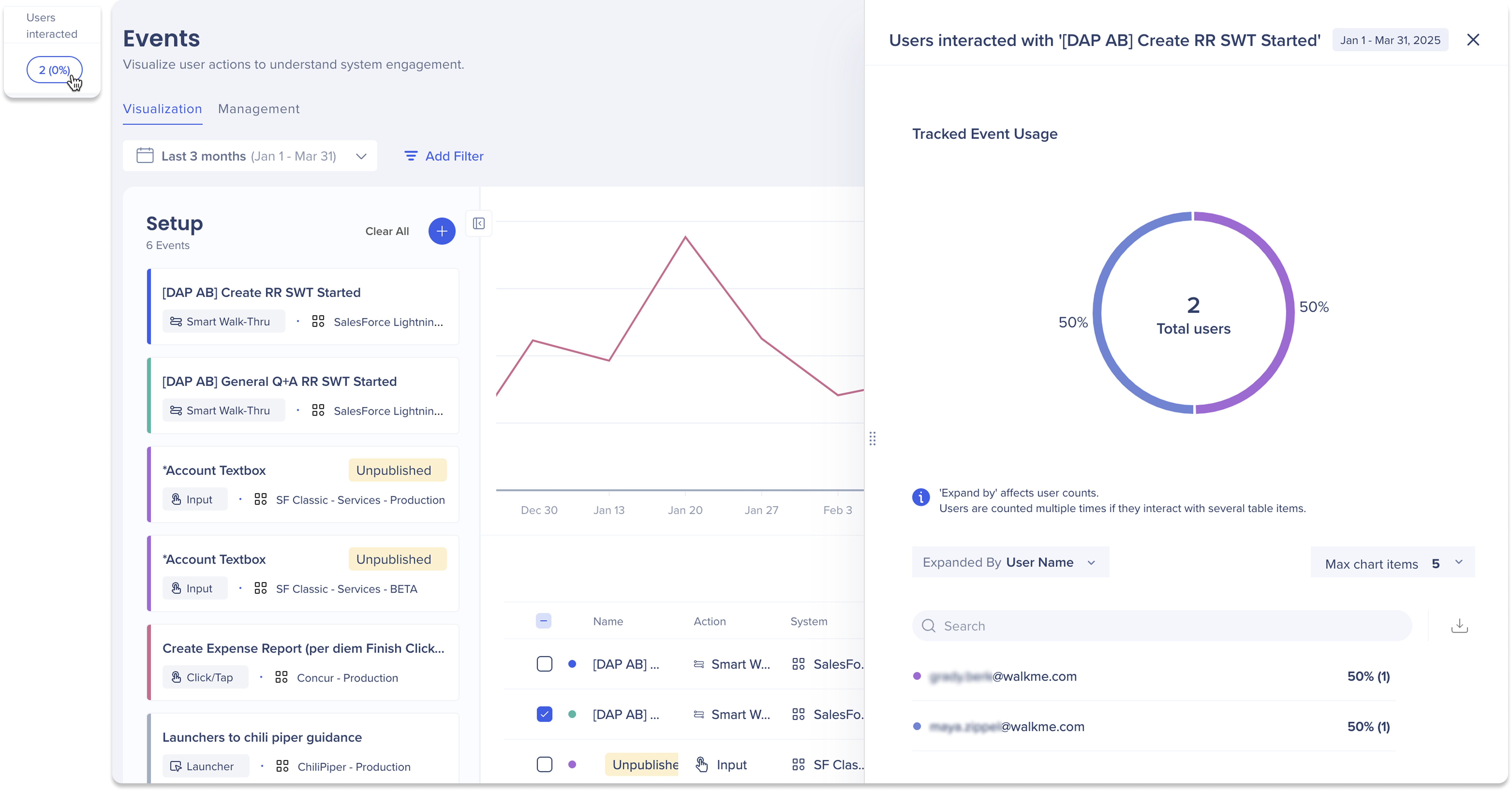
Choose the article below based on the type of event you want to create:
Learn how to capture on-screen elements in the WalkMe Editor to track user interactions accurately and securely.
Learn how to create Tracked Events using manual setup or capture to measure key user actions, process completion, and page visits.
